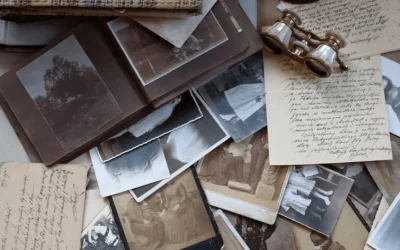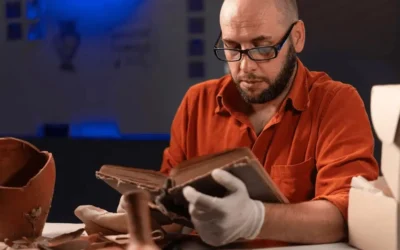Shifting Concepts of Archival Permanence
Margot Note
Archivists need to understand and communicate what they mean by permanence. A historical overview of the concept of permanence starts with oral traditions and ends with current ideas about archives without permanence.
Over time, permanence has acquired varied and shifting meanings for archivists; they distinguish between the permanence of the information and the permanence of the original form of the material. Preservation grew and changed with new technologies, but the only practical solution is to preserve select, rather than comprehensive, records.
The Complicated Concept of Permanent
The idea of permanent records is problematic. To view archival records as permanent disregards the ability of archivists to choose deaccession. The concept of “permanent” in archives has always been a more complicated term than it appears. A reconsideration of the idea of the permanent value of records began to emerge in professional archival discussions in the mid-1980s. A more realistic phrase than permanence is “records of enduring value.” “Acceptable permanence” has also been discussed as archivists further define what can be preserved in contemporary archives.
Digitization as Preservation
The concept of permanence informs digitization. Just as those in earlier times published to ensure permanence of a collection, digitization has become a new tool for preservation. This concept is true to a degree. When a record is digitized, the need to access its original is reduced, limiting wear and tear. Publishing a digitized record online also provides access to many communities previously not served by access to analog records. However, some users believe that if a record is not digital, it does not exist, or the effort to retrieve it is not worth it. Digital preservation is still in its infancy, but it has become clear that there may be even less permanence with digital records than with analog records.
Archivists must understand the nature of the material, such as hardware and software, which make up digital records. They are familiar enough with paper to see how it deteriorates, but they have yet to see how digital records will break down over time and how they can cost-effectively preserve them while retaining their original formatting. Unlike a paper record that may be damaged but is still readable, a digital record that is damaged even slightly is completely unreadable.
Preservation Assessment
Collections should have a preservation assessment at the time of accessioning, with preservation being an ongoing activity. Controlling the environment is the key to preservation, and some preservation activities may be done in-house, while others are left for preservation professionals.
While preservation cannot save materials forever, it can extend their life and their usefulness as historical objects. Preservation can protect items by minimizing their chemical and physical deterioration. In doing so, preservation also reduces information loss.
Making Tough Decisions
Archives without permanence is a contradictory and challenging concept to understand, especially because preservation is so tied to archives. However, this concept offers freedom to archivists because it allows them to make critical decisions regarding the archives.
Using phrases such as “continuing value” or “enduring value” tends to be more accurate than “permanent value” because it recognizes that appraisal decisions made in the past may change. Future archivists may decide that the records no longer hold historical value and can make the decision to reappraise them. This flexibility of judgment allows for archivists to be more responsive to collection needs.
The explosion of records in contemporary times makes selection vital lest archivists find themselves drowning in records. The concept of permanence, and the reality of its temporary nature, is conflicting—but the profession must agree upon standards of “acceptable permanence” to do our work properly and to bring the past to the future.
Margot Note
Margot Note, archivist, consultant, and author is a guest blogger for Lucidea, provider of ArchivEra, archival collections management software for today’s challenges and tomorrow’s opportunities. Read more of Margot’s posts here, and get your free copy of Margot’s whitepaper, Digital Sustainability: the Archivist’s Path Forward.
Similar Posts
Texas Archive of the Moving Image: Interview with the Digital Archivist
I recently interviewed Grace Muñoz about her work at the Texas Archive of the Moving Image. Her work on improving the discoverability of the multimedia collection is fascinating.
How to Conduct Comprehensive Archival Surveys
Conducting a comprehensive archival survey is critical to successfully managing archival collections.
Remembering History, Moving Forward Together, with ArchivEra
The Catholic Diocese of Arlington’s Director of Archives selected ArchivEra to manage their collections of historical and cultural significance, and strike a balance between security and access.
Unveiling Archival Impact
The transformative power of storytelling depends upon the strategic choices that top archival performers make and the shift from being record-keepers to change agents.




Leave a Comment
Comments are reviewed and must adhere to our comments policy.
0 Comments